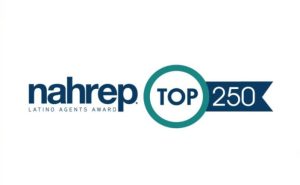“We tend to give away so much info through electronic media that it doesn’t allow us to build a relationship by stopping and having a conversation with them.”
So, now you’ve hosted that open house and you have a great list of potential connections! These names and numbers are useless until you use them. Now is the time to follow up with all of your guests and turn those superficial connections into clients.
Before we get to the follow-up though, there are three power questions you should be asking every person who attends your open house:
- What was it that attracted you to this home?
The answers to this question will tell you what attracted potentials buyers to the home, but will also define what’s important to them. The neighborhood, the schools, the features of the house, etc. - Do you have a home to sell?
If the answer is no, then focus on selling this home. But if the answer is yes, it could very well change the entire conversation – now your focus is not only showing the home, but by asking questions and listening to those answers to possibly get your next listing as well. - Do you want to buy this home?
Do not let a single person leave your open house without hearing the answer to this question. It may sound crazy, but it helps for an open house conversion. It takes away that uncomfortable awkward ending. If they say yes, you’re ready to roll with all the paperwork. If they say no, then you have the opportunity to find out why, and it opens up the dialogue for what they’re looking for and gives you a chance to offer up other bounce-off properties in your inventory.
If you ask these three questions with every person who visits the house, your follow-up tasks will be so much easier.
The Great Disconnect
When it comes to follow up, we have to remember there’s a great disconnect between agents and potential buyers. Plain and simple, as real estate professionals, we want to sell something. Immediately. But buyers aren’t necessarily on the same page – your open house attendees are people in every stage of the home buying cycle, from simple consideration, to online research and active search, to transaction and even post-sales, where they’re looking at houses they could have purchased.
Even so, these are not people to ignore! While it is tempting to focus on those who show an immediate interest in buying a home, every contact you make needs a follow up. Every. Single. One.
Relationship Matters
In 2013, 45 percent of home buyers visited an open house during their search. According to NAR, six percent of buyers and four percent of sellers found their REALTOR® at an open house. Those numbers may sound small but open houses are actually the second most common way for real estate professionals and clients to meet – the first being through personal referrals, which account for close to 80 percent of connections. This huge discrepancy shows how important relationships are, as one attendee can bring you five new clients.
Keep in mind that according to home buyers, the #1 benefit of real estate professionals during the home search is that they helped the buyers understand the process. Buyers don’t really want the stats, they want the consultant to help them through the buying process.
Lines of Communication
NAR also tells us that while real estate professionals are very comfortable and even overly reliant on reaching out to their clients via text messaging and emails, the buyers themselves would prefer a phone call.
Having said that, keep in mind that on average it takes eight to ten follow up calls for a response. This means you need to be diligent; it doesn’t mean you have to “harass” people. Myriad forms of communication can be used to get their attention. Tweet them, text them, Facebook them. Post a thank-you video to their social media pages. Send handwritten thank-you cards.
When it comes to communications skills, be aware that NAR found that 82 percent of home buyers were satisfied with their agent’s communication skills. That’s a fantastic number, but one out of every five buyers didn’t feel that their real estate agent had good communications skills. And that’s key – follow-up IS communication.
Developing a process of communication gets effective results. Make up a script for a quick phone call then follow up with a detailed email. Do what works for you. However, don’t let impersonal contact take over. No matter how uncomfortable phone calls may be, people appreciate personal communication.
The Buyer Consultation
Closing the buyer consultation is key. This meeting is your opportunity to sit down and explain to the buyer process works. How long it takes to get preview appointments at the houses, how commission works, and how your business relationship will work. Let them know you’re committed to them, and in return, their commitment to you. This consultation also gives you the opportunity to make follow-up calls, and allows you to showcase your knowledge around the home buying process to wow that buyer.
Challenges in Open House Follow-Up
- Follow-up quickly. But not too quick. Be smart about it. It doesn’t need to be that Sunday night. But pick up the phone or shoot them an email on Monday morning or whatever time you believe buyers are more likely to respond.
- Don’t give away too much information on email. Find a reason to pick up the phone. We tend to give away so much information through electronic media that it doesn’t allow us to build a relationship by stopping and having a conversation with them.
- Learn to transition from “cold” communications (email) to “warm” communications. You just have to get used to picking up the phone. It may sound old-school, but we know that’s what buyers like.
- Conversation rates are lower than one might imagine. In a typical sales funnel, for every 100 leads, you will have a conversation with 28 people. So if you make 100 phone calls, you should receive or talk to 28 live people. Of those 28, you will get 3 appointments and do 1 transaction. If you talk to 28 people at an open house, you should get 8 people, actively start working with 3 of them, and end up with 1 transaction.
Overcoming the challenges
- Find a reason to check in. Make at least 10 follow-up attempts – the national average is 10. There’s always a reason to follow-up with open house attendees – there’s so much information to share, there’s always a new potential listing.
- Figure out your touch points, and use them. That’s phone calls to check in, letters with marketing information, emails with local information, and handwritten letter or thank-you cards.
- Collect your non-responsive leads. Set them up on a short digital email drip campaign. This includes everybody you met at your open house. Just keep building your list that you send content to every week or every month. It’s a great way to be strategic about following up.
- Create an email template. You may be out and about with the family, or at another open house – but you want to have a general email template set up, for whenever someone reaches out. You can quickly access that template to add in pertinent information and get it back out the door. This tells the clients that you saw their email and that they’re important to you.
In the end, the only way to make a sale is to follow up. Whether it comes a week after the open house or a year, patience and perseverance will get you the connections – and sales – your business needs!








